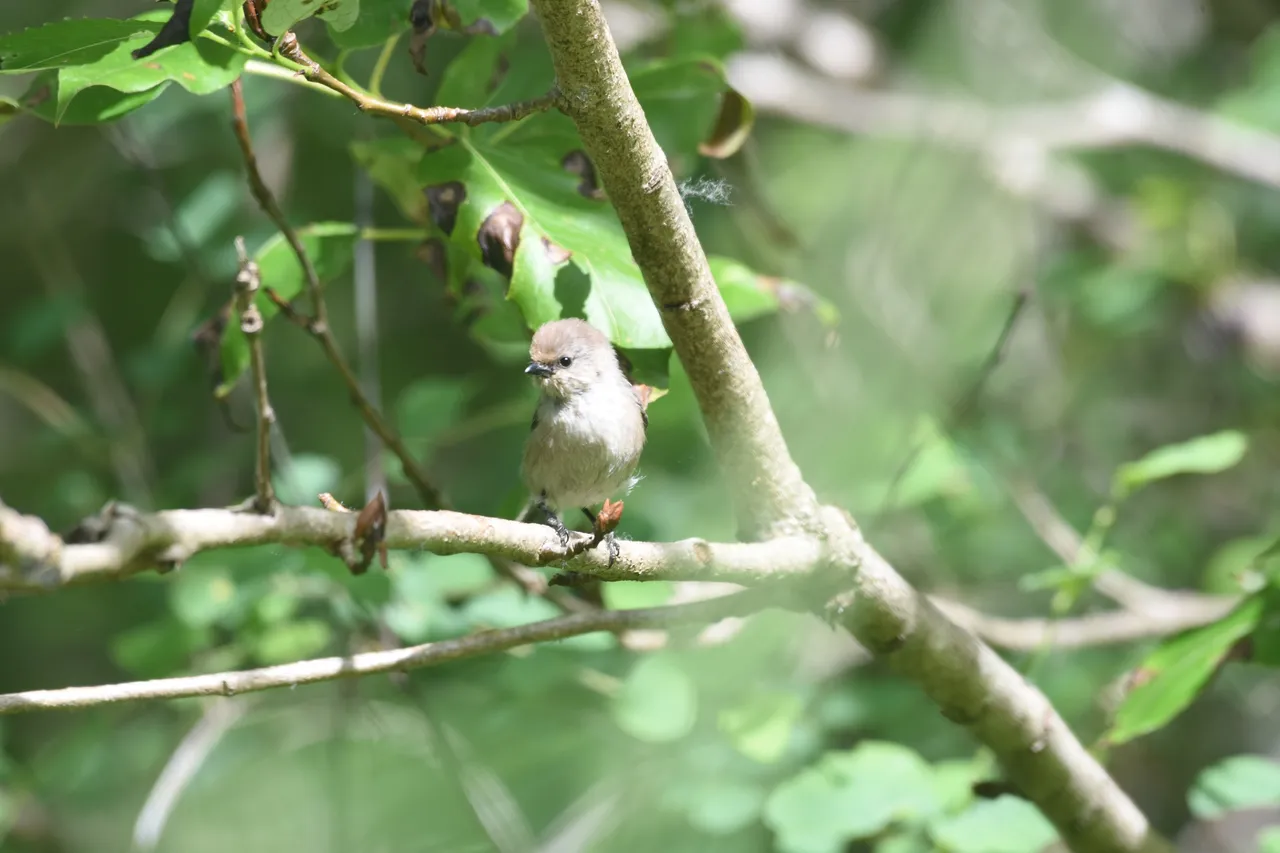
Bushtit Psaltriparus minimus weights just 5.5 grams, yet winters in areas with freezing nights.
The ratio of body mass to surface area helps explain why most tiny birds migrate to warmer climates in the cold winters of the northern hemisphere. Still, some tiny birds like this Bushtit, many other tits/chickadees/kinglets and others manage to keep from freezing. The formula to determine the surface area of an object is relatively proportional to the square of its mass, but the formula for its volume is proportional to the cube of its mass. This means that as mass increases the surface area increases much less slowly in proportion to the mass. Or inversely smaller birds have a much larger surface area to lose heat from per unit of mass.
Put in simple terms small birds need to burn a lot more energy per gram of weight to keep warm in cold climates.
This makes Bushtits all the more remarkable. Unlike most other tits and chickadees that winter in the north, they eat mostly insects and spiders. These are harder to eat large volumes of than seeds or vegetation.
That is likely why when you see a winter flock of bushtits they are constantly foraging, always moving in search of food.
Another strategy Bushtits use is to huddle together in tightly packed groups at night in the winter, to share lost heat with each other.

Anyway, these little birds are remarkable in being able to keep alive in northern cold winter climates.
Be sure to look for the Bird Banter Podcast on your favorite podcast app or feed, or go to- http:/birdbanter.com to find all of the episodes.
Good birding. Good day!